Description
Get your degree with ease by using our files. We do not keep any logs and we do not log any information. What does this mean for you? This means, your order is completely anonymous and confidential. Part of our service allows you to purchase these files without anyone else knowing. There is no risk and you have nothing to lose. If you are using this very text book in school right now, then you will need this nursing test bank to learn important core knowledge so you can be the ultimate nurse. Add this product to your cart and checkout to receive the download for Test Bank Financial Accounting 3rd Edition Kemp Waybright
Do you have any questions? Would you like a sample sent to you? Just send us an email at inquiry@testbankcorp.com (no spaces). We will respond as soon as possible.
Financial Accounting, 3e (Kemp/Waybright)
Chapter 1 Business, Accounting, and You
1.1 Questions
1) By taking accounting classes, the student is learning the “language of business.”
Answer: TRUE
Diff: 1
LO: 1-1
EOC Ref: Vocabulary
AACSB: Reflective Thinking (Able to understand oneself in the context of society)
AICPA Business: Strategic/Critical Thinking
AICPA Functional: Decision Modeling
2) To manage a business effectively, an owner or manager would benefit greatly from having some knowledge of accounting.
Answer: TRUE
Diff: 1
LO: 1-1
EOC Ref: Vocabulary
AACSB: Reflective Thinking (Able to understand oneself in the context of society)
AICPA Business: Strategic/Critical Thinking
AICPA Functional: Decision Modeling
3) Businesses primarily exist to generate sales.
Answer: FALSE
Diff: 1
LO: 1-1
EOC Ref: Vocabulary
AACSB: Reflective Thinking (Able to understand oneself in the context of society)
AICPA Business: Strategic/Critical Thinking
AICPA Functional: Decision Modeling
4) The value of an item does NOT depend on when it is expected to be received.
Answer: FALSE
Diff: 2
LO: 1-1
EOC Ref: S1-2
AACSB: Reflective Thinking (Able to understand oneself in the context of society)
AICPA Business: Strategic/Critical Thinking
AICPA Functional: Measurement
5) Society is considered to be a stakeholder in a business.
Answer: TRUE
Diff: 2
LO: 1-1
EOC Ref: Case1, Case 2
AACSB: Reflective Thinking (Able to understand oneself in the context of society)
AICPA Business: Strategic/Critical Thinking
AICPA Functional: Decision Modeling
6) Accounting information is used to help managers and decision makers understand risk.
Answer: TRUE
Diff: 1
LO: 1-1
EOC Ref: Discussion Question 1
AACSB: Reflective Thinking (Able to understand oneself in the context of society)
7) What do we call the result obtained when revenue is less than cost?
A) Loss
B) Profit
C) Value
D) Risk
Answer: A
Diff: 1
LO: 1-1
EOC Ref: Vocabulary
AACSB: Reflective Thinking (Able to understand oneself in the context of society)
8) Which of the following is NOT part of the accounting process as it relates to information?
A) Measuring
B) Recognizing
C) Understanding
D) Reporting
Answer: C
Diff: 1
LO: 1-1
EOC Ref: Vocabulary
AACSB: Reflective Thinking (Able to understand oneself in the context of society)
AICPA Business: Strategic/Critical Thinking
AICPA Functional: Decision Modeling
9) According to the textbook, in order for an organization to be called a business it must:
A) exchange a product with a customer.
B) make money.
C) be a corporation.
D) provide a service.
Answer: A
Diff: 1
LO: 1-1
EOC Ref: Vocabulary
AACSB: Reflective Thinking (Able to understand oneself in the context of society)
AICPA Business: Strategic/Critical Thinking
AICPA Functional: Decision Modeling
10) Which of the following impacts the value of an item to its owner?
A) When the owner expects to receive something in exchange for the item
B) How certain the owner is about what and when they will receive something in exchange for the item
C) What the owner expects to receive in exchange for the item
D) All of the above
Answer: D
Diff: 1
LO: 1-1
EOC Ref: S1-2
AACSB: Reflective Thinking (Able to understand oneself in the context of society)
AICPA Business: Strategic/Critical Thinking
AICPA Functional: Measurement
11) When revenue exceeds cost, it is referred to as:
A) loss.
B) profit.
C) value.
D) risk.
Answer: B
Diff: 1
LO: 1-1
EOC Ref: Vocabulary
AACSB: Reflective Thinking (Able to understand oneself in the context of society)
AICPA Business: Strategic/Critical Thinking
AICPA Functional: Measurement and Reporting
12) Which of the following would NOT be considered a stakeholder in a business?
A) An employee
B) A supplier
C) A regulator
D) All of the above are stakeholders
Answer: D
Diff: 2
LO: 1-1
EOC Ref: Vocabulary
AACSB: Reflective Thinking (Able to understand oneself in the context of society)
AICPA Business: Strategic/Critical Thinking
AICPA Functional: Decision Modeling
1.2 Questions
1) Amounts owed to the business’ owners as a result of an initial investment are called liabilities.
Answer: FALSE
Diff: 1
LO: 1-2
EOC Ref: S1-3
AACSB: Reflective Thinking (Able to understand oneself in the context of society)
AICPA Business: Strategic/Critical Thinking
AICPA Functional: Decision Modeling
2) Net income and profit are the same thing.
Answer: TRUE
Diff: 1
LO: 1-2
EOC Ref: Vocabulary
AACSB: Reflective Thinking (Able to understand oneself in the context of society)
AICPA Business: Strategic/Critical Thinking
AICPA Functional: Decision Modeling
3) The only way for business to get money is to borrow it.
Answer: FALSE
Diff: 1
LO: 1-2
EOC Ref: Vocabulary
AACSB: Reflective Thinking (Able to understand oneself in the context of society)
AICPA Business: Strategic/Critical Thinking
AICPA Functional: Decision Modeling
4) Business owners expect to be compensated for both time and risk.
Answer: TRUE
Diff: 1
LO: 1-2
EOC Ref: Vocabulary
AACSB: Reflective Thinking (Able to understand oneself in the context of society)
AICPA Business: Strategic/Critical Thinking; Industry
AICPA Functional: Decision Modeling
5) Business owners are paid interest on the money they have invested in the business.
Answer: FALSE
Diff: 1
LO: 1-2
EOC Ref: Vocabulary
AACSB: Reflective Thinking (Able to understand oneself in the context of society)
AICPA Business: Strategic/Critical Thinking; Industry
AICPA Functional: Decision Modeling
6) Liabilities are defined as:
A) earnings retained in the business.
B) amounts owed to lenders.
C) stockholders’ claims to assets.
D) future economic benefits of a company.
Answer: B
Diff: 1
LO: 1-2
EOC Ref: S1-9
AACSB: Reflective Thinking (Able to understand oneself in the context of society)
AICPA Business: Strategic/Critical Thinking
AICPA Functional: Decision Modeling
7) Assets are defined as:
A) earnings retained in the business.
B) amounts owed to others.
C) stockholders’ claims to assets.
D) economic resources of a company.
Answer: D
Diff: 1
LO: 1-2
EOC Ref: S1-9
AACSB: Reflective Thinking (Able to understand oneself in the context of society)
AICPA Business: Strategic/Critical Thinking
AICPA Functional: Decision Modeling
8) Which of the following does NOT describe Stockholders’ Equity?
A) Profits retained in the business
B) Money lent to a business
C) The owners’ claim on the assets of a company
D) Money invested in a business by its owners
Answer: B
Diff: 1
LO: 1-2
EOC Ref: S1-9
AACSB: Reflective Thinking (Able to understand oneself in the context of society)
AICPA Business: Strategic/Critical Thinking
AICPA Functional: Decision Modeling
9) Which of the following is NOT an asset?
A) Net income
B) Inventory
C) Buildings
D) Cash
Answer: A
Diff: 1
LO: 1-2
EOC Ref: S1-5
AACSB: Reflective Thinking (Able to understand oneself in the context of society)
AICPA Business: Strategic/Critical Thinking
AICPA Functional: Decision Modeling
10) Net income is defined as:
A) revenue plus expenses.
B) revenue less assets.
C) expenses less revenue.
D) revenue less expenses.
Answer: D
Diff: 1
LO: 1-2
EOC Ref: S1-14
AACSB: Reflective Thinking (Able to understand oneself in the context of society)
AICPA Business: Strategic/Critical Thinking
AICPA Functional: Decision Modeling
11) The expense of using borrowed money for a period of time, is referred to as:
A) net income.
B) revenue.
C) liability.
D) interest.
Answer: D
Diff: 1
LO: 1-2
EOC Ref: Vocabulary
AACSB: Reflective Thinking (Able to understand oneself in the context of society)
12) What do we call amounts of money borrowed from lenders?
A) Asset
B) Liability
C) Expense
D) Revenue
Answer: B
Diff: 1
LO: 1-2
EOC Ref: Vocabulary
AACSB: Reflective Thinking (Able to understand oneself in the context of society)
13) Owner’s Equity represents:
A) an initial investment of cash by the owners.
B) a fair distribution of wealth in the firm.
C) retention of profits by a firm.
D) all of the above.
E) A and C only.
Answer: E
Diff: 1
LO: 1-2
EOC Ref: Vocabulary
AACSB: Reflective Thinking (Able to understand oneself in the context of society)
1.3 Questions
1) All businesses are operated to generate a profit.
Answer: FALSE
Diff: 1
LO: 1-3
EOC Ref: Vocabulary
AACSB: Reflective Thinking (Able to understand oneself in the context of society)
AICPA Business: Strategic/Critical Thinking
AICPA Functional: Decision Modeling
2) A business may be either a for-profit business or a not-for-profit business.
Answer: TRUE
Diff: 1
LO: 1-3
EOC Ref: Vocabulary
AACSB: Reflective Thinking (Able to understand oneself in the context of society)
AICPA Business: Strategic/Critical Thinking
AICPA Functional: Decision Modeling
3) A business with one owner is called a sole proprietorship and it must be a service business.
Answer: FALSE
Diff: 1
LO: 1-3
EOC Ref: S1-3
AACSB: Reflective Thinking (Able to understand oneself in the context of society)
AICPA Business: Strategic/Critical Thinking
AICPA Functional: Decision Modeling
4) Wal-Mart and Target would be examples of corporate merchandising businesses.
Answer: TRUE
Diff: 1
LO: 1-3
EOC Ref: S1-3
AACSB: Reflective Thinking (Able to understand oneself in the context of society)
AICPA Business: Strategic/Critical Thinking
AICPA Functional: Decision Modeling
5) Law and accounting firms are service businesses.
Answer: TRUE
Diff: 1
LO: 1-3
EOC Ref: Vocabulary
AACSB: Reflective Thinking (Able to understand oneself in the context of society)
AICPA Business: Strategic/Critical Thinking
AICPA Functional: Decision Modeling
6) Shareholders must pay income tax on the dividends they have received from a corporation.
Answer: TRUE
Diff: 1
LO: 1-3
EOC Ref: S1-3
AACSB: Analytical Thinking
AICPA Business: Legal/Regulatory
AICPA Functional: Measurement and Reporting
7) A limited liability company (LLC) is a legal entity like a corporation, but the income is taxed like a sole proprietorship or partnership.
Answer: TRUE
Diff: 1
LO: 1-3
EOC Ref: Vocabulary
AACSB: Reflective Thinking (Able to understand oneself in the context of society)
AICPA Business: Legal/Regulatory
AICPA Functional: Decision Modeling
8) A tax preparation business is primarily a:
A) merchandising operation.
B) service operation.
C) not-for-profit operation.
D) manufacturing operation.
Answer: B
Diff: 1
LO: 1-3
EOC Ref: Vocabulary
AACSB: Reflective Thinking (Able to understand oneself in the context of society)
AICPA Business: Strategic/Critical Thinking
AICPA Functional: Decision Modeling
9) Which of the following types of organization would primarily sell goods?
A) Merchandising business
B) Service business
C) Manufacturing business
D) Both Merchandising and Manufacturing businesses sell goods.
Answer: D
Diff: 1
LO: 1-3
EOC Ref: Vocabulary
AACSB: Reflective Thinking (Able to understand oneself in the context of society)
AICPA Business: Strategic/Critical Thinking
AICPA Functional: Decision Modeling
10) Which of the following types of organizations would produce goods?
A) Merchandising business
B) Service business
C) Both merchandising and manufacturing businesses produce goods.
D) Manufacturing business
Answer: D
Diff: 1
LO: 1-3
EOC Ref: Vocabulary
AACSB: Reflective Thinking (Able to understand oneself in the context of society)
AICPA Business: Strategic/Critical Thinking
AICPA Functional: Decision Modeling
11) Which of the following is a disadvantage of the corporate form of business?
A) Ease of raising capital
B) Double taxation
C) Limited resources
D) Limited liability
Answer: B
Diff: 1
LO: 1-3
EOC Ref: Vocabulary
AACSB: Reflective Thinking (Able to understand oneself in the context of society)
AICPA Business: Legal/Regulatory
AICPA Functional: Decision Modeling
12) Which of the following is an advantage of a sole proprietorship?
A) Ease of formation
B) Limited liability of owner
C) Ease of raising capital
D) Unlimited life
Answer: A
Diff: 1
LO: 1-3
EOC Ref: Vocabulary
AACSB: Reflective Thinking (Able to understand oneself in the context of society)
AICPA Business: Legal/Regulatory
AICPA Functional: Decision Modeling
13) Which type of organization has stockholders?
A) Partnerships
B) Sole proprietorships
C) Corporations
D) Limited liability companies
Answer: C
Diff: 1
LO: 1-3
EOC Ref: Vocabulary
AACSB: Reflective Thinking (Able to understand oneself in the context of society)
AICPA Business: Legal/Regulatory
AICPA Functional: Decision Modeling
14) Which of the following business forms is similar to a corporation in regard to owner liability?
A) All businesses are the same with regard to owner liability.
B) Limited liability company
C) Sole proprietorship
D) Partnership
Answer: B
Diff: 1
LO: 1-3
EOC Ref: Vocabulary
AACSB: Reflective Thinking (Able to understand oneself in the context of society)
AICPA Business: Legal/Regulatory
AICPA Functional: Decision Modeling
15) Which of the following do NOT pay taxes on the business income through their individual owners?
A) S-corporation
B) Sole proprietorship
C) Partnership
D) Corporation
Answer: D
Diff: 1
LO: 1-3
EOC Ref: Vocabulary
AACSB: Reflective Thinking (Able to understand oneself in the context of society)
AICPA Business: Legal/Regulatory
AICPA Functional: Reporting

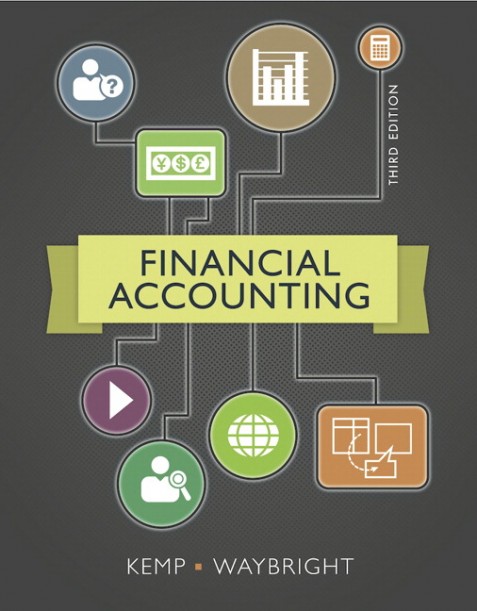
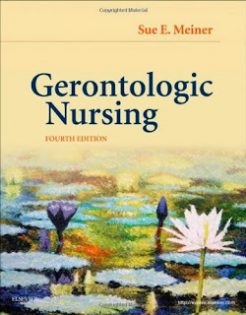
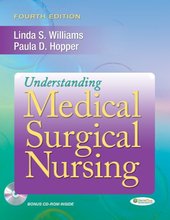
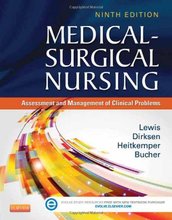
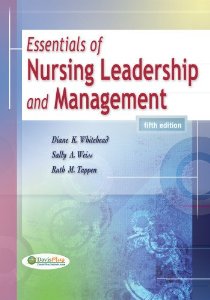

Reviews
There are no reviews yet.